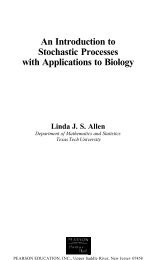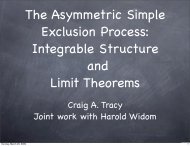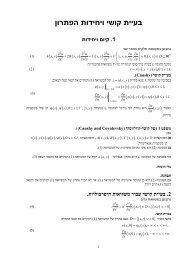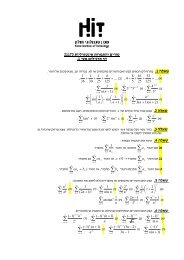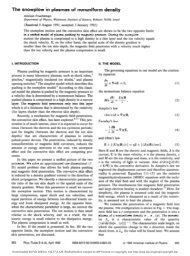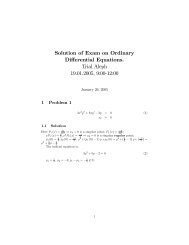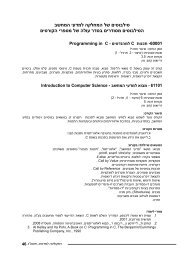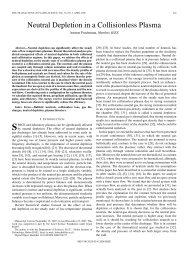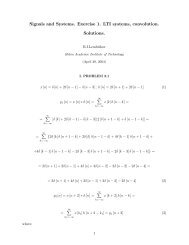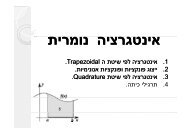Experiment 5 â Coupler Design.
Experiment 5 â Coupler Design.
Experiment 5 â Coupler Design.
You also want an ePaper? Increase the reach of your titles
YUMPU automatically turns print PDFs into web optimized ePapers that Google loves.
Forward wave<br />
1 2<br />
Through wave<br />
Sampled wave<br />
4<br />
3<br />
Isolated wave<br />
Figure 2 - Coupled lines based directional coupler.<br />
Since there is no ideal coupler available, some of the forward travelling<br />
wave is coupled into port 3. This mean that we may think that there is<br />
a reverse travelling wave when there isn’t. This is very critical in application<br />
where the directional coupler is used to measure the return loss of the<br />
device. By calculating 20 log(S 31 /S 41 ) we can find the return loss of the device<br />
connected to port 2. If out coupler has no perfect directivity then out<br />
measurement is not accurate.<br />
There are few simple parameters to describe the functionality of a coupler:<br />
• Insertion Loss: 20 log(S 21 ) or 10 log(1 − k 2 ).<br />
• Return Loss: 20 log(S 11 ).<br />
• Coupling: 20 log(S 31 ) or 20 log(k).<br />
• Directivity: 20 log(S 31 ) − 20 log(S 41 ).<br />
3.1 Non - Directional <strong>Coupler</strong>s<br />
In some applications, the directivity of the coupler is not important. For<br />
instance, if we know there is only forward travelling wave then we may use<br />
a non-directional coupler. One possible realization is using a simple resistor<br />
divider as shown in Figure 3.<br />
5



